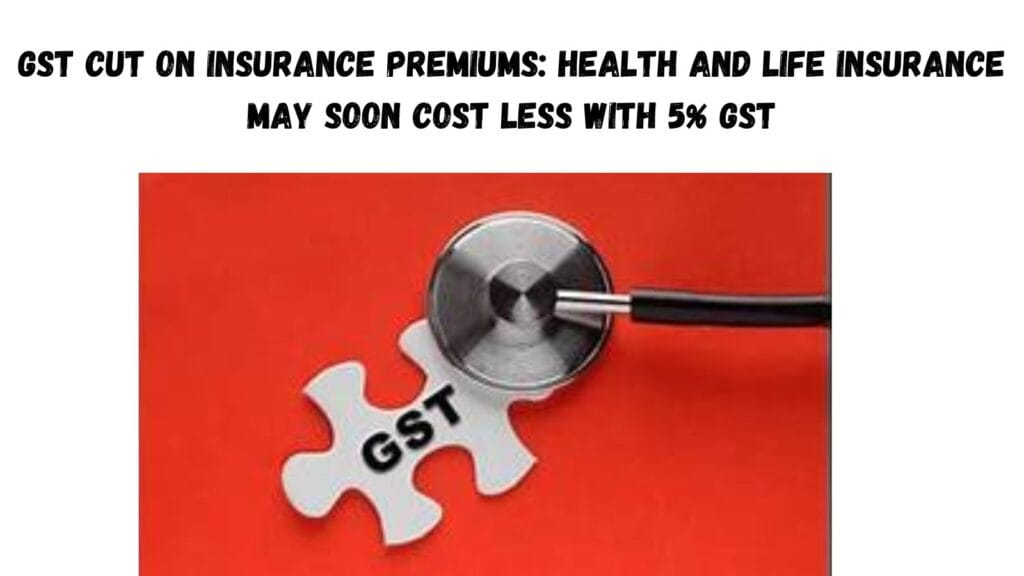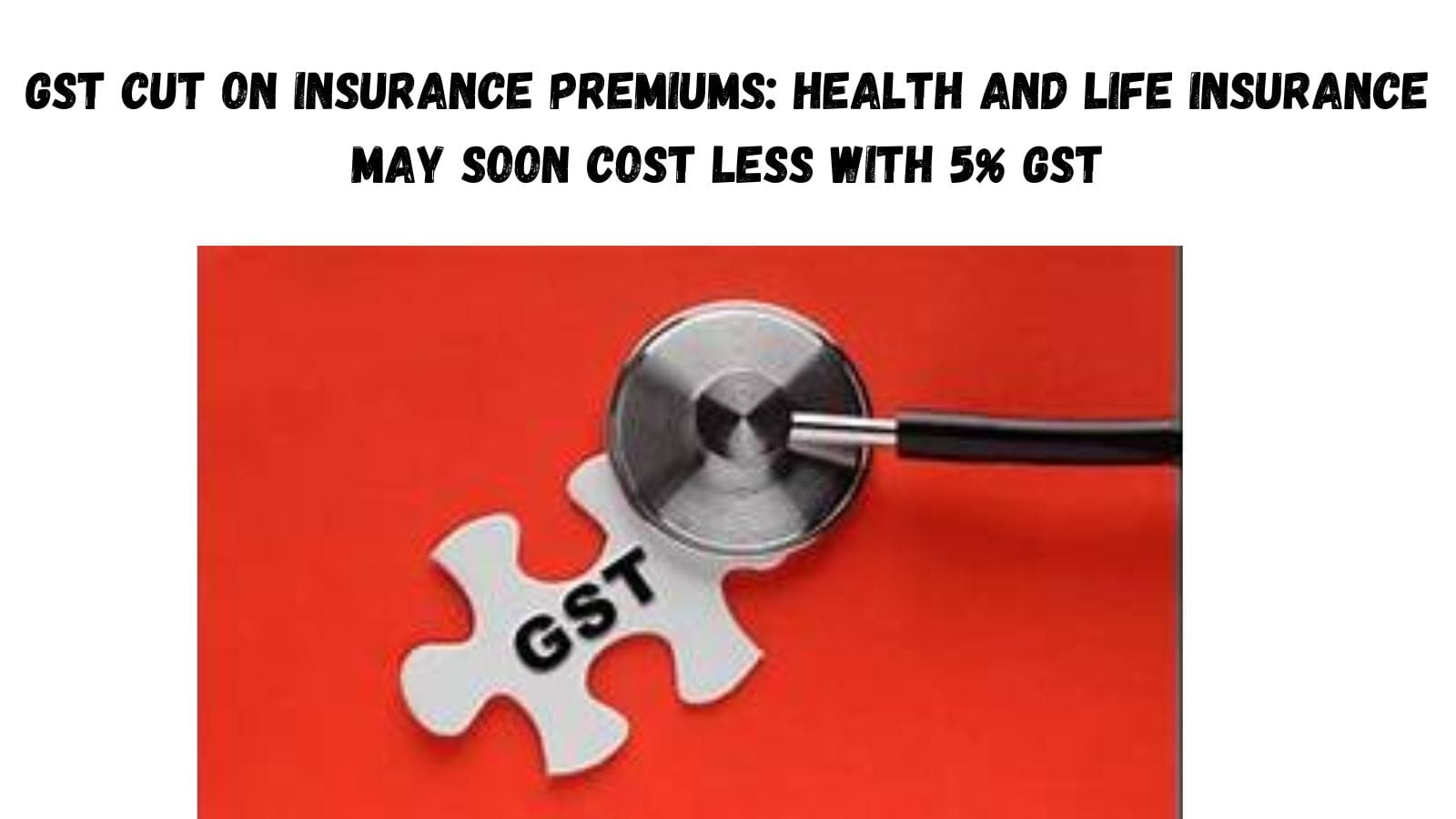The Case for GST Reduction on Health and Life Insurance
The GST Council may soon decide on a plan. This plan could lower the Goods and Services Tax (GST) on insurance premiums in India. The proposal suggests reducing the rate from 18% to 5%. This change could make health and life insurance more accessible and affordable. This upcoming decision is expected in the GST Council meeting in June or early July 2025. It represents a major policy shift with wide-ranging effects.
Right now, insurance premiums, especially for life, health, and term insurance, have an 18% GST. This makes them more expensive for consumers. This high rate has long acted as a deterrent. This is especially true for middle- and lower-income households. They already face rising living costs and shrinking disposable incomes. Healthcare inflation in India has reached double digits recently. Life insurance is now a crucial financial tool after the pandemic. As a result, many people are underinsured or completely uninsured.

The Group of Ministers (GoM), led by Bihar Deputy Chief Minister Samrat Chaudhary, submitted a detailed report in December 2024. This report recommends rate changes in many sectors, focusing on making insurance more affordable. The decision was delayed due to complex state agreements and talks with stakeholders.
The plan to cut GST to 5% and allow Input Tax Credit (ITC) is a vital move. It promotes financial inclusion and social security. This change will help more people invest in insurance without facing heavy taxes. If put into action, this would save money for individuals and families. They could shield themselves from surprise health costs or support their loved ones financially.
India’s insurance penetration is low. As of 2023, it stands at about 4.2% of GDP. This includes both life and non-life insurance. The global average is over 7%, so there’s a significant gap. Industry experts and economists argue that the high GST is one of the contributing factors to this lag. A tax cut fits well with the government’s goal to boost insurance coverage. It also aims to strengthen insurance’s role in financial planning.
A good tax policy helps households and boosts the nation’s finances. It encourages people to manage risks using formal methods.
This article will look at the background and effects of the plan to reduce the GST rate on insurance premiums. It will discuss the economic reasons behind it, share real-life examples, and examine the expected impact. We’ll also look at what this means for policyholders, the insurance industry, and the Indian economy. Consumers, financial planners, and policymakers need to understand the details of this GST change. This knowledge helps them navigate India’s changing financial landscape.
The GST Council will make important choices in its next meeting. They may lower the tax rate on health and life insurance premiums from 18% to 5%. This change could also include Input Tax Credit (ITC). This change seeks to ease costs for policyholders. It will especially help middle- and lower-income households.
Background
Current Tax Structure
Under the existing GST framework, insurance premiums attract an 18% tax rate. This rate applies to different insurance products. This includes health, life, and term insurance policies. The inclusion of ITC allows businesses to offset the tax paid on inputs, thereby reducing the overall tax burden.
Proposed Changes
The Group of Ministers (GoM), led by Bihar’s Deputy Chief Minister Samrat Chaudhary, suggests lowering the GST rate on health and life insurance premiums to 5%. This includes ITC. Additionally, there is a proposal to exempt GST on health insurance premiums up to ₹5 lakh for individuals who are not senior citizens.
Rationale Behind the Proposal
Enhancing Affordability
The primary objective of this tax reduction is to make insurance products more affordable. Rising medical costs and a growing awareness of insurance show its importance. Lowering the tax rate could help more people buy health and life insurance policies.
Supporting Middle- and Lower-Income Households
The proposal aims to lower taxes. Many of these households find current premiums too high.
Aligning with Global Practices
Many countries see the value of affordable insurance. So, they have lowered tax rates or given exemptions to encourage more people to get coverage. India’s move aligns with global trends towards encouraging insurance penetration.
Potential Impact
Increased Insurance Penetration
A reduction in GST rates could lead to increased adoption of insurance products. As premiums drop, more people might choose coverage. This could boost insurance penetration in the country.
Economic Benefits
More insurance coverage can provide better financial security. This helps lessen the economic stress during medical emergencies or unexpected events. This, in turn, can contribute to overall economic stability.
Challenges and Considerations
Impact on Insurance Companies
Lower tax rates help policyholders, but insurance companies may struggle with the new tax rules. The potential loss of revenue from reduced tax rates could affect their financial stability.
Implementation and Compliance
The transition to a new tax regime requires careful planning and execution. It’s important that everyone follows the rules for this initiative to succeed in all states and union territories.
Real-Time Examples
Case Study: Senior Citizens
In a recent discussion, it was proposed to exempt GST on health insurance premiums for senior citizens. This move aims to alleviate the financial burden on elderly individuals who often face higher medical expenses.
Case Study: Middle-Income Families
A middle-income family currently pays ₹15,000 annually for a health insurance policy. With the proposed 5% GST rate, the annual premium would decrease, making insurance more affordable for such families.
Fun Fact
Did you know? The concept of insurance dates back to ancient civilizations. The Code of Hammurabi, from 1750 BC, had rules for insurance-like plans. These plans helped protect merchants and traders.
A Potential Turning Point for India’s Insurance Landscape
The proposal to cut GST on health and life insurance from 18% to 5% with input tax credit (ITC) is not just a tax change. It’s a smart move for both society and the economy. If the GST Council approves it, this change could lead to inclusive insurance growth. It would make protection-focused financial products cheaper and more attractive to many people.
This change could give important financial help to policyholders. It’s especially beneficial for middle- and lower-income households. Health and life insurance have shifted from luxury items to must-haves in modern India. This change is especially clear after the COVID-19 pandemic. Rising medical costs and greater awareness of health risks and mortality also play a big role. Yet, the affordability gap remains stark, with a large part of the population still uninsured or underinsured.
Lowering GST could lead to big savings on premiums each year. This change might help many families buy or upgrade their policies. For instance, a family paying ₹20,000 annually for health insurance currently pays ₹3,600 as tax. A drop to 5% would reduce this to just ₹1,000, freeing up money for other essentials or for increasing the sum insured.
Insurance companies may struggle with managing input tax credits. Their input services include consultancy, brokerage, and administrative support. These often face higher tax rates, ranging from 12% to 18%. Many insurers and financial advisors believe this move is good for the long term. A larger insured base can help balance short-term revenue changes.
Also, this tax cut should boost insurance penetration. This is vital for India’s long-term financial health. A nation with most citizens insured is stronger against financial shocks. It relies less on government aid in crises and feels more empowered to plan for the future.
This move would place India with developed nations that charge little or no taxes on life and health insurance. It recognizes these services as public goods, not just commercial luxuries. It supports India’s goals for financial inclusion and the Digital India vision. It encourages buying policies online and makes claim processing easy.
The GST Council’s decision, therefore, holds the power to not only ease financial stress but also build a more secure and equitable society. Policymakers can rethink how taxation supports essential services. This is a chance to build a more caring and sustainable fiscal model. If approved, this policy change could turn insurance from an optional investment into a basic need for every Indian home.
While we wait for the Council’s final decision, one fact stands out: lowering GST on insurance is more than tax policy. It’s a life policy, a health shield, and a way to empower millions financially.
Reducing GST rates on health and life insurance premiums is a big step. It makes insurance easier to get and more affordable for everyone. Challenges are present, but the potential benefits are significant. They include more coverage and better financial security. The GST Council is getting ready to make its decision. Stakeholders are excited to see the results that might change the insurance landscape in India.
ISO Health Insurance: Navigating the Maze of Student Coverage
FAQs
The current GST rate on insurance premiums is 18%.
Middle- and lower-income families, along with seniors, should gain from the suggested tax cut.
The proposed changes primarily target health and life insurance premiums.
The GST Council is expected to make a decision in its upcoming meeting, scheduled for June or early July 2025.
Insurance companies might struggle with the new tax rules. However, they should gain from more people buying policies because of lower premiums.
